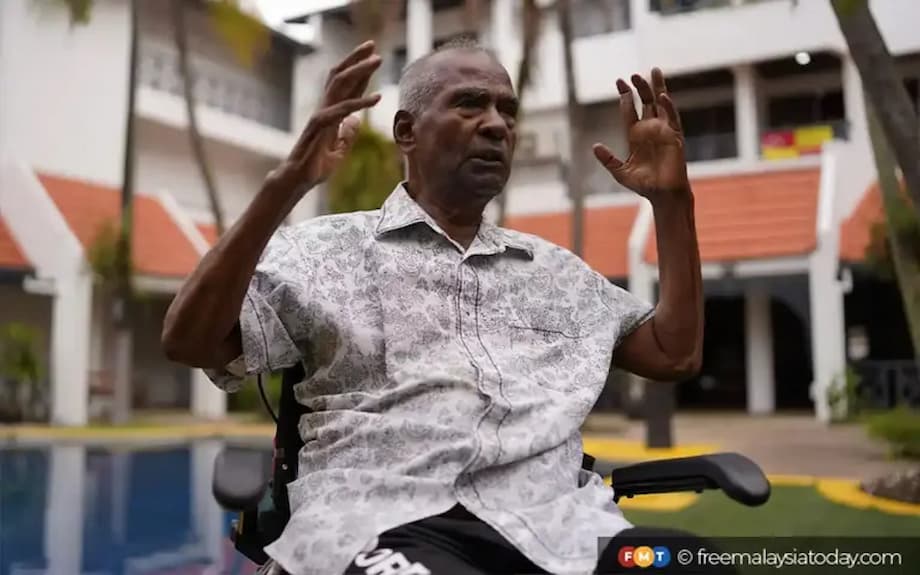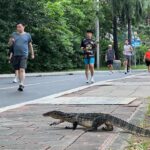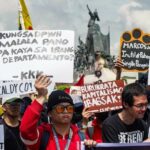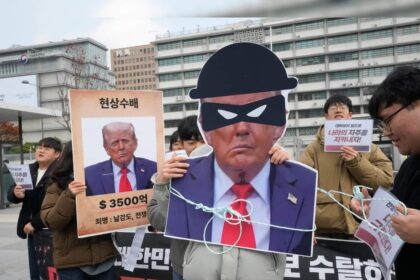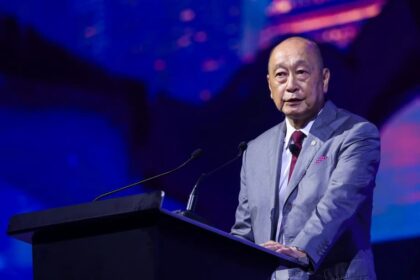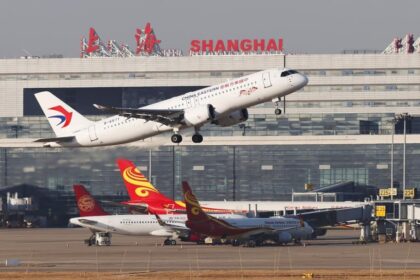Unity on foot across a diverse nation
For half a century, scenes of crowded streets in Kuala Lumpur and other cities have carried a simple message. People moving side by side can build a stronger country. The man behind that movement is S Vegiyathuman, a tireless organiser who treated mass participation events as a national project, not just a calendar of races. On Malaysia Day, when unity comes into focus, his story reads like a civic lesson delivered with running shoes and walking shoes.
- Unity on foot across a diverse nation
- From school champion to architect of mass events
- What made the Big Walk a national ritual
- The first half marathon and the rise of city running
- Inside his method, safety and detail first
- Building athletes from banks and offices to national teams
- A Malaysian voice on the world stage
- Service, leadership and honors earned along the way
- Life today and what legacy means to him
- Why community sport still matters in a diverse nation
- Key Points
Vegiyathuman, widely celebrated as the King of Walks and Runs, saw sport as a bridge that anyone could cross. He did not fixate on podiums. He cared more about who showed up, who felt welcome, and how a city came alive when thousands set off together. His approach turned ordinary weekends into gatherings where Malaysians from many backgrounds trained, cheered, and laughed together.
He once explained the philosophy that guided everything he built. He believed patriotism could be visible not only in elite medals but in shared miles on open roads. He spoke of rhythm, tempo, and how strangers became neighbors during a long morning walk.
Introducing that idea, Vegiyathuman put it this way:
“It was also about walking shoulder to shoulder with strangers, moving forward in unison, celebrating the shared rhythm of being Malaysian.”
From school champion to architect of mass events
Born in 1941 in Bukit Mertajam, Vegiyathuman first made his mark as a young runner. Representing Bukit Mertajam High School, he won cross country titles in Penang in the late 1950s. His coach then was KS Nijhar, who later entered national politics. Those formative years taught him the discipline of training and the community that sport can create.
He credits former athletics administrator A Vaithilingam with shaping his craft as an organiser. From course layout to rules, from timing systems to volunteer briefings, he learned the technical backbone of an event. That training became the base for a movement that would stretch across decades.
By the 1960s he served as a fingerprint examiner with the police at Bukit Aman. It was steady work, but his heart remained on the track and on the streets. In the 1980s, Kuala Lumpur mayor Elyas Omar asked him to stage Sunday runs in city parks to promote fitness. Crowds responded. Seeing thousands gather gave him the confidence to plan bigger undertakings, including road runs that turned central Kuala Lumpur into a festival of motion.
What made the Big Walk a national ritual
Among the many events he shaped, the Malay Mail Big Walk, known lovingly as the Biggie, stands out. It began in 1960 with fewer than 3,000 walkers. Under his stewardship it swelled into a carnival. Tens of thousands joined during its peak years. Offices formed teams. Families planned weekends around it. Neighborhoods turned out to watch.
The Biggie also became a training ground for race walking, which is a technical event within athletics. In race walking one foot must always appear to be in contact with the ground, and the advancing leg must be straight from the moment of first contact until it passes under the body. Getting that right requires years of practice, careful coaching, and keen officiating. The event gave space for that pathway to grow.
Talents who came through included K Thirumal, whom Vegiyathuman referred to as Malaysia’s father of race walking. Names that followed included V Subramaniam, Khoo Chong Beng, G Saravanan, Anastasia Karen Raj, and Yuan Yufang. They did not emerge out of empty air. They trained in public view, surrounded by citizens who saw that excellence can begin on a city street when opportunities exist.
The first half marathon and the rise of city running
In 1989, Vegiyathuman organised what is regarded as Malaysia’s first 21 kilometer half marathon. He did not chase headlines. He wanted to give everyday people a new challenge, one that required preparation and patience, and, once completed, built confidence. The half marathon format offered something large enough to feel epic yet reachable with a few months of consistent training.
From those steps came larger ambitions. He founded the Kuala Lumpur International Marathon, which later set the stage for what is now the Standard Chartered KL Marathon. By 2013, the event was drawing tens of thousands and offering one of the largest prize purses in the country at the time. It celebrated the city’s heritage with starts and finishes at Dataran Merdeka. Organisers built an event that welcomed beginners, families, corporate teams, and elite athletes. Charity partners benefited as runners raised funds while they trained.
Mass events on this scale do not spring up by accident. They require permits, medical cover, traffic coordination, timing systems, hydration stations, and thousands of volunteers. Behind the banners stood a man who prized details and safety above all else.
Inside his method, safety and detail first
Those who worked with him describe a leader who checked the course layout at dawn, rehearsed emergency protocols, and drilled teams on precise timing for road closures and flag offs. Former national hurdler Anto Keney Martin, who was part of the team at the RHB Centennial Run in 2013, recalled the standard Vegiyathuman set for crews and volunteers.
Introducing Martin’s recollection, colleagues point to his emphasis on security and smooth execution from start to finish. Martin remembered how the event stayed on course even when rain threatened schedules.
“He was precise in every aspect of safety and security. There was no room for mistakes. Even when rain poured before dawn, he was the first at the venue, ensuring the flag off would be smooth. His wealth of knowledge guided us all.”
That approach, consistent over decades, helped the public trust these gatherings. Runners and walkers knew they were in good hands. City agencies knew that plans were realistic and clearly communicated. Sponsors saw that their brands were linked to events run with care.
Building athletes from banks and offices to national teams
Vegiyathuman did not separate community participation from high performance. He believed both could grow together. One of his proudest creations was the interbank athletics circuit. Office workers competed regularly, found coaches, and built discipline around weekly training. The circuit fed national squads in a way few expected. At one stage, he said those meetings produced a large share of the national team.
Introducing his view, he described how corporate employees could become international contenders with the right structure in place.
“At their peak, these meetings produced most of the national team. These bank employees could still train and shine for Malaysia.”
Grassroots advocate Dina Rizal credits him for laying the foundation for stronger youth work within the Federal Territory Athletics Association. The programmes, mentoring, and constant outreach seeded a culture that keeps drawing young people into track and road events. As those teens gain confidence, the entire system benefits.
A Malaysian voice on the world stage
His influence did not end at city limits. Vegiyathuman served as a walks judge at the 2004 Athens Olympics and at the World Athletics Championships in Seville in 1999. He also officiated at the Paralympic Games. Officiating at that level demands technical mastery, steady nerves, and judgment that holds up under scrutiny. It is a vote of confidence from the global athletics community.
He also conducted courses and clinics across Asia, sharing his practical approach with young officials and organisers. Those sessions focused on the things that can make or break an event: safety planning, marshal training, route design, athlete services, and conflict resolution on race day. Many who now run events across the region learned those basics from him.
Service, leadership and honors earned along the way
Inside Malaysia, his service was long and steady. He served as general secretary of the Federal Territory Athletics Association (FTAA) from 1985 to 2016, then took on the presidency in 2017. He stepped down in 2020 after shaping the association into a home for both grassroots races and elite competition. Many in the sport describe FTAA as a family that looks after its own and welcomes newcomers with equal warmth.
He received a datukship during Federal Territories Day in 2014. In 2024 he was inducted into the Olympic Council of Malaysia Hall of Fame, a recognition shared with other officials and athletes who built the nation’s sporting record. The honor reflected a career that blended technical know how with a public spirit that never faded.
Those who saw him at work remember the long nights, the phone calls to vendors, the last minute checks of hydration points, and the quiet words of encouragement for nervous first timers. His presence steadied teams and raised expectations across the road running and walking calendar.
Life today and what legacy means to him
Today, at 84, he uses a wheelchair after a spinal cord injury and has lived in an assisted living facility since 2020. His schedule has slowed, but the pride he takes in young athletes remains vivid. When he watches programmes run by FTAA and its partners, he sees an echo of the work he nurtured for decades.
Introducing that sense of continuity, he described how the next generation is taking ownership and moving the mission forward.
“When I see the grassroots programmes in FT today, and the way young people are being discovered and nurtured, my efforts were not in vain. The new generation of administrators are doing well, and I am proud of what is being carried on.”
He has said many times that the project was never about him. It was about giving people a place to belong, whether they were future champions or first time entrants who walked more than they ran.
“For me, it was never about personal glory. It was about giving Malaysians a chance to be part of something bigger. Whether you were a future champion or just someone who wanted to finish a walk, you belonged.”
That sense of purpose does not always quiet the ache of distance. Friends from the athletics circle once filled his days, and he misses them.
“I feel lonely here at times. I miss my friends in the athletics fraternity.”
FTAA president V Pulanthiran captured the way many within the sport think about his mentor’s contribution.
“He inspired many officials and athletes, acted as a mentor to them, and was a friend to everyone he met. For four decades, Vegiyathuman was the livewire of Malaysian athletics. He was the invisible hand that kept the heartbeat of community sport alive.”
Why community sport still matters in a diverse nation
Events like the Biggie and the Kuala Lumpur marathons are more than a day out. They turn streets into common ground. A runner from Shah Alam ends up pacing alongside a walker from Batu Caves, and the distance between them shrinks. Volunteers hand cups from the same tables to people wearing many colors and crests. That contact, repeated year after year, builds respect and a sense of shared space.
Mass participation events also bring practical benefits. Training nudges people toward better daily habits. Groups that form around a weekly run or walk tend to stick. Participants meet across age, language, and profession. Young volunteers learn about logistics and public responsibility. City agencies learn how to manage crowds with calm precision, which helps during emergencies or national events. These skills layer up across time.
There is a public health angle as well. Walking is accessible and low cost, and it reduces barriers to entry that often keep people away from sport. When events feel safe and welcoming, families take part together. Children see adults modeling effort and patience. They learn that finishing can matter as much as winning.
Vegiyathuman’s legacy sits inside that simple truth. A well run walk or run can be a small school in citizenship. It teaches punctuality, mutual support, respect for rules, and pride in shared achievement. It also gives people a memory to hold. Many Malaysians still recall their first medal, their first finish at Dataran Merdeka, or the first time they showed up nervous and left part of a team. That feeling brings them back, and it brings friends along.
Key Points
- S Vegiyathuman championed mass participation as a path to unity, turning city runs and walks into national gatherings
- He helped grow the Malay Mail Big Walk from a small event into a tens of thousands carnival and a launch pad for race walking talent
- He organised Malaysia’s first 21 kilometer half marathon in 1989 and founded the Kuala Lumpur International Marathon, which set the stage for the modern KL Marathon
- His event model prized safety, precision, and community welcome, raising standards for organisers across the country
- Interbank athletics meets he launched developed a pipeline that fed national teams in track and field
- Internationally, he served as a walks judge at the Athens 2004 Olympics and at the World Athletics Championships in Seville in 1999
- He led the Federal Territory Athletics Association for decades and received a datukship in 2014, then joined the OCM Hall of Fame in 2024
- Now 84 and using a wheelchair, he continues to inspire administrators and young athletes with a message of belonging and shared purpose


